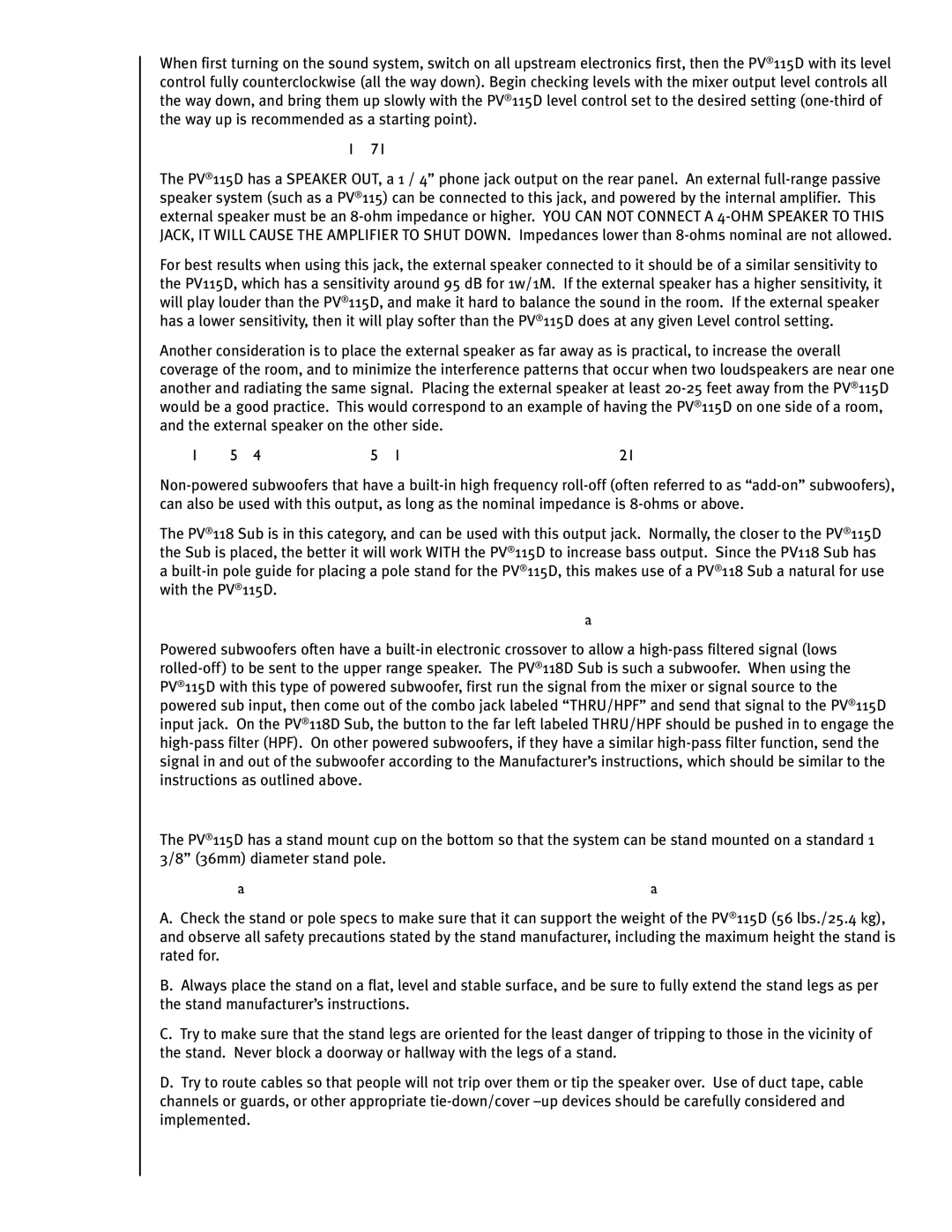PV115D specifications
The Peavey PV115D is a powerful and versatile active loudspeaker designed for various applications, from live performances to DJ events and public speaking engagements. With its robust construction and innovative features, this speaker offers a professional sound experience tailored to meet the demands of today’s audio environments.One of the standout features of the PV115D is its 15-inch heavy-duty woofer, which is designed to deliver deep and accurate bass response. This is coupled with a 1.4-inch titanium diaphragm compression driver that produces crystal-clear highs, ensuring that vocals and instrumentation are reproduced with stunning clarity. The combination of these components enables the speaker to handle a wide frequency range, making it suitable for diverse musical genres and audio content.
The PV115D is equipped with an onboard 300-watt peak power amplifier, which provides adequate headroom for high-volume applications. This built-in amplification eliminates the need for external amplifiers, simplifying setup and reducing gear complexity. Additionally, the speaker features a built-in EQ with preset configurations, allowing users to tailor the audio output to suit specific environments and preferences.
For connectivity, the PV115D includes multiple input options, such as XLR and 1/4-inch TRS inputs, making it compatible with a wide range of audio sources. The speaker also features a microphone input with dedicated volume control, enabling easy integration into live setups where vocal reinforcement is needed.
Durability is a hallmark of the PV series, and the PV115D is no exception. It is housed in a sturdy, textured polypropylene enclosure designed to withstand the rigors of transport and use in various settings. Moreover, the speaker is equipped with a robust, perforated metal grill that protects the drivers while allowing for optimal sound dispersion.
Another advantageous aspect of the PV115D is its lightweight design, which makes it easier to transport and set up. Its integrated handles enhance portability, allowing users to move it with ease, whether for rehearsals, gigs, or events.
In conclusion, the Peavey PV115D is a feature-rich active loudspeaker that offers exceptional sound quality, efficient performance, and robust construction. With its powerful amplifier, versatile connectivity options, and tailored sound shaping, it stands out as an ideal choice for audio professionals and enthusiasts alike.
